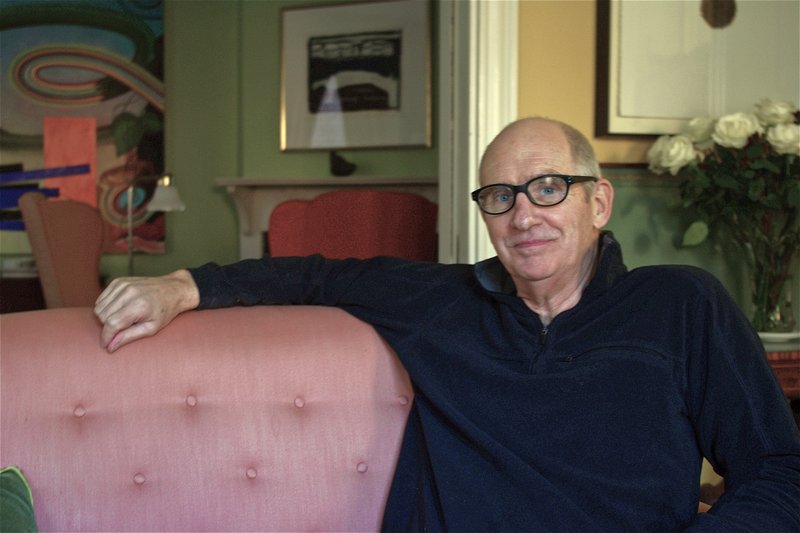PORTLAND – Plenty of people along the way have doubted George Smith and his vision and ambition to create the first-ever doctoral program in philosophy and art theory.
But Smith, a Portland resident and a former dean at Maine College of Art, proved the doubters wrong earlier this month. That’s when the Board of Trustees of the New England Association of Schools and Colleges voted to grant candidacy status for accreditation to Smith’s Maine-based Institute for Doctoral Studies in the Visual Arts.
The accreditation benchmark was hugely important for the future of Smith’s program. Without it, students would not qualify for federally guaranteed financial aid. With its candidacy status secured, the IDSVA may now apply to the federal Department of Education for the opportunity for students to bring down loans and aid.
“It’s a huge step in the process,” Smith said over coffee at Arabica. “We’ve cleared a major hurdle.”
Glenn Cummings, an IDSVA trustee, former Maine House speaker and, until recently, deputy in the U.S. Department of Education, said the candidacy status does other important things as well.
“Obviously, first and foremost it’s important for our students, but it will also help with our marketing.” Cummings said. “We are going to grow the school, make it more well-known among art students and art faculty around the country and around the world.”
Here’s a primer on the doctoral program, and why it might matter to Mainers: Smith founded the institute in 2007 as a low-residency opportunity for working art professionals from around the world to earn a Ph.D. in visual art and theory. No other similar program exists.
Smith designed his program to operate without a campus. It is based and chartered in Maine, but its classrooms are the museums and cities of Italy, France and the United States.
Students travel the globe for residencies in Tuscany, the Venice Biennale, Paris and New York. They visit with and hear lectures from leading artists and scholars, and return to their homes to do their work independently. It’s a classic low-residency, distant-learning model.
Tuition is $23,000 annually, and in three years, the program has enrolled about 30 students — none, so far, from Maine.
“We haven’t been able to raise sufficient scholarship money to make that possible,” Smith said. “But that will change.”
The success of the program matters to Mainers because it reflects well on the state and its willingness to be a leader in the field of education, Cummings said. As a former deputy at the federal Department of Education, Cummings knows something about education models.
He has seen nothing like Smith’s program before, and he thinks its efficiency and nimbleness are attributes that could serve as models for other institutions going forward.
“It’s an asset for the state to have a strong institution of higher learning and for Maine to be a leader for finding new and innovate ways to reach students around the country and around the world,” Cummings said.
“The model of how they deliver their service and their ability to combine intensive in-person learning with distant-learning technology is highly innovative, and may be the future of higher education. So the model itself is very attractive.”
Cummings attended the accreditation hearing with Smith at a hotel in Bedford, Mass., in mid-November. With Cummings beside him, Smith sat in front of a group of about 30 college presidents and provosts — many of whom might see the program as a threat — answered every question and knocked down every concern.
He won the panel over, and won the votes he needed to allow the IDSVA to advance to the next level.
Cummings was impressed and proud — impressed with Smith’s performance under pressure before this august group of scholars, and proud that an institution from Maine was leading the discussion.
“The question came up, why don’t you just move this into the Boston University art program, or into the Trinity (College) program? George said, ‘Two reasons. First of all, those schools are coming to us asking us for consultations. But second, I know it would take five to 10 years for a program like this to get started if were under an institution.’ They all nodded their heads, ‘That’s true, that’s true.’ “
Smith and his board have done it in three, without the financial backing of an institution.
Throughout the process, Smith has had to defend the program locally and otherwise. People have asked, and rightly so, how an academic program chartered in Maine benefits this state if none of the students are from here and none of the education occurs here. How can it possibly help Maine?
Smith answers with a story about an ancestor. His great-great-grandfather was Sam Percy, of Percy and Small boatbuilder fame. The Bath boatyard built schooners and sent them around the world, where they gained a reputation for their design and efficiency. The boats rarely ended up in Maine, but the reputation of the state spread across the globe.
He sees his doctoral program in the visual arts in similar terms.
“We’ve designed a program that has a world vision,” Smith said.
For more information, visit www.idsva.org.
Staff Writer Bob Keyes can be contacted at 791-6457 or at: bkeyes@pressherald.com
Follow him on Twitter at: twitter.com/pphbkeyes
Send questions/comments to the editors.



Success. Please wait for the page to reload. If the page does not reload within 5 seconds, please refresh the page.
Enter your email and password to access comments.
Hi, to comment on stories you must . This profile is in addition to your subscription and website login.
Already have a commenting profile? .
Invalid username/password.
Please check your email to confirm and complete your registration.
Only subscribers are eligible to post comments. Please subscribe or login first for digital access. Here’s why.
Use the form below to reset your password. When you've submitted your account email, we will send an email with a reset code.